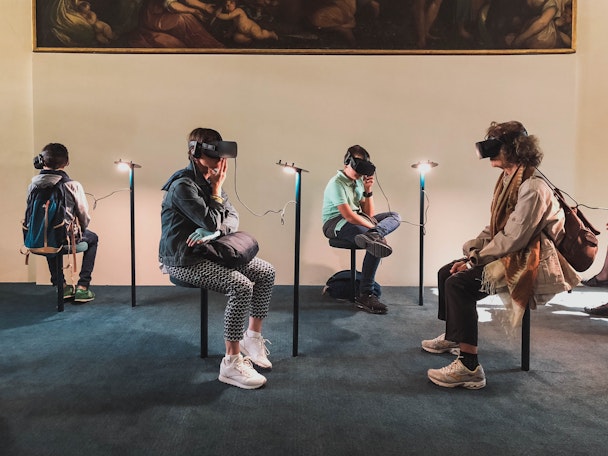AR: what’s next and how can marketers embrace the tech?
As augmented reality (AR) progresses and technology continues to evolve, Tommy co-founder and chief growth officer Marcus Foley considers how it can be used in new industries.

Tommy predicts where the evolution of AR will take the advertising industry / Lucrezia Carnelos via Unsplash
AR has moved into the mainstream. For some age groups, it’s phenomenally familiar already. It’s still an exciting and fast-moving growth area for the marketing industry, developing at pace. The global AR market is expected to expand with a 40%+ compound annual growth rate in the next six to eight years. It’s allowing brands to create experiences that only a few years ago we couldn’t imagine delivering on a phone to a waiting crowd of millions (or billions – 3.5 billion users globally, as it stands). Even fewer than this many people would be confident enough to pick it up, play, share and create with it. Now we’re delivering hundreds every few months.
At Tommy, we spend a lot of time designing, making and geeking out over AR experiences. This is partly driven by being an official partner for TikTok, and working with a considerable number of household name entertainment brands. AR can be a brilliant tool for famous characters and their fans, and we’ll come on to that, but it is also becoming increasingly important for the retail sector – 71% of shoppers recently reported they would shop with a retailer more often if it offered AR.
Why is AR so attractive to shoppers? For the relevant brands, it’s the ease and speed of product trial, which can be mind-blowing these days. Want to try a new hair color? Click, it’s done. You like it? Click, it’s in your basket. Want to see that new sofa, in your chosen fabric, in your lounge? Click, it’s done. It might save two or three trips to the showroom. What has changed is that it’s become easier to deliver on devices without the need for apps, it’s much easier to use and it’s far more convincing, which has opened up the market. This is without talking about the myriad of fashion brands that have tested, trialed or permanently used AR in their purchase journey. Trying on, personalizing, seeing things in your context – these all de-risk the purchase and give customers the confidence to buy.
What else is pushing AR into familiar spaces and sometimes unexpected hands? Social media, of course. What’s interesting about AR in these spaces is that it has become a part of turning the traditional model of influence on its head. In social media, AR is helping everyday people (not brands or celebrities) to tell more immersive, richer stories with unlimited creative possibilities – without a budget or a studio – from their own special effects lab. Where once the technology barriers and costs kept this as a domain for the few, it’s now in the hands of a huge volume of people. With so many individuals and ideas with such powerful tools, it takes storytelling and shareability to a whole new level.
The younger generations are often the instigator, but all generations are being exposed to AR through their peers, friends and family. It might be in photos and videos using lenses, a shared moment playing a game at a family event, or a website where a convenient trial moment is embedded into the customer journey. If you ask them, ‘Do you use AR?’, they would probably say no, but they are part of a growing number of people who are starting to see the blend of digital and physical imagery as being ‘normal.’ Of course, it’s not just Josephine Bloggs putting bunny ears on Granny – it’s also the creators and brands that are intentionally building an audience that is driving expectation and desire for AR too.
So what about them? For one, the entertainment industry loves AR, and albeit from our slightly biased perspective, is doing some amazing work to bring their IP to people in immersive moments that were previously impossible. Combining novel experiences with getting a fan closer to their favorite characters – in many cases appearing as their favorite foe or hero – can go a long way to encourage people to try, create and share. The noise from each major release ripples through feeds and, once again, AR becomes less novelty and more expected. Those who don’t have it become the odd ones out.
AR is no longer a novelty – and the expectation and desire for it is growing. What does this mean for marketers? It means that it’s time to start having a serious think about AR, and to identify if it works for your product and target market. This is not to advocate for the use of technology where it doesn’t fit, but to encourage you to explore, and at least understand, how your customers are using these tools to engage with people, products and places. It’s great fun, and its capacity to inspire and connect people with pure entertainment moments shouldn’t be overlooked. However, it’s more than that – it’s a shift in the way we experience brand and product that is here to stay.
Content by The Drum Network member:

Tommy
Tommy are a Global Creative & Production Studio who stand out in the sea of sameness to deliver work that is truly distinctive. Ideas that are different. New. Evoke...
Find out more
